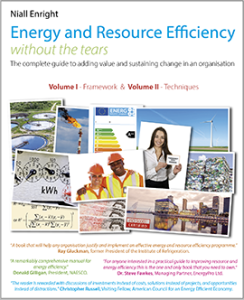I would probably have taken little interest in yesterday’s announcement that a relatively small regional airline, flybmi, has ceased trading, if it was not for the fact they were placing the blame, in part, on the EU Emissions Trading Scheme (ETS). According to the statement on the airline’s website [1]:
The airline has faced several difficulties, including recent spikes in fuel and carbon costs, the latter arising from the EU’s recent decision to exclude UK airlines from full participation in the Emissions Trading Scheme.
So, I wanted to find out if this was really the case.
First of all, the background. You may recall from my earlier post that the EU is facing a real challenge for its flagship ETS as a result of BREXIT. The problem is that allowances in the scheme can be traded freely between member states of the EU but if the UK leaves the scheme ahead of the current Phase (running to 2020), there is a very real risk that the now redundant UK allowances, would flood the market and so render the ETS ineffective at capping carbon emissions.
Various tweaks were proposed to the scheme, such as bringing forward the date of surrender of 2018 calendar-year allowances to the 15th March 2019 (ahead of the 29th March BREXIT date) forcing 2018 or earlier vintage allowances to be surrendered in line with 2018 carbon emissions. The intention of the UK government is to remain a full member of the ETS during the Transition Phase set out in the withdrawal agreement, which means that allowances could continue to be free-issued/auctioned in 2019 as these would be required for UK emitters to be surrendered in 2020.
However, the increasing prospect of a “no deal” BREXIT has forced the EU to implement its emergency plans and suspend the UK from the ETS Registry from the 1st January 2019 [2]. The effect of this is that the UK government cannot free-issue or auction emissions allowances for the 2019 year since these cannot be entered into the Registry. So how does that decision impact on flybmi? Well, they – like every other airline – will have needed to report their emissions in the next few weeks and surrendered sufficient allowances to cover this by the March 15 deadline.
Frustratingly, I cannot track down whether British Midland Regional Limited, the legal entity behind the brand “flybmi”, (CRCO Id f200001 [3]) is receiving free allowances from the UK government. 82% airline’s requirements are provided free of charge – based on 2010 figures – which tapers down over time, but British Midland Regional Limited don’t appear on the last list of recipients of free allowances from the UK government [4]. However, I am assuming that flybmi did depend on this hand-out, as otherwise “exclude UK airlines from full participation in the Emissions Trading Scheme” would not have any effect – they would need to buy their allowances in the market, something which didn’t change dramatically on 1st Jan. The only conclusion I can come to is that they were relying on a hand-out of free allowances early in 2019 to help them cover their 2018 calendar year’s emissions. Hopefully someone closer to the Aviation sector reporting scheme can respond to this post and confirm this is plausible or not.
Let’s assume that flybmi now suddenly needs to pay for a big chunk of allowances that they would otherwise have received free of charge. How much is that likely to be? Take a flight from London to Frankfurt (I don’t know if that was one of their routes, but it is just an example of two of their locations). According to the ICAO calculator [5] an aircraft will emit 3.7 tonnes of CO2. At yesterday’s price of €23 per tonne, the total allowances cost (assuming no free issue) would be €85 (£75).
In 2018 flybmi flew 29,000 flights [1], so if the Frankfurt flight was typical (which it isn’t, as most flights were a much shorter distance), that would make for £2.175 m cost of allowances. Indeed, in 2017 British Midland Regional Ltd made a loss of £5m on their ordinary activities, so the EU-ETS costs are not insignificant. This sounds a lot, but divided amongst the 522,000 passengers [1], we get to a figure of £4.17 per passenger. This compares with £13 Air Passenger Duty per passenger for a UK or EU flight.
Nope, I don’t think that the EU-ETS can credibly account for the demise of flybmi. It may certainly have been a cash-flow issue if the airline was banking on a chunk of free allowances early in 2019, but if that is the case the issue is arguably of a failure to accrue for a liability in the past (I don’t know I am just speculating). But what is clear is that with an average number of passenger of just 18 per flight on aircraft with 37 or 49 seats, their load factor was very low and so the EU-ETS cost per passenger was over double what it would have been on fully-loaded aircraft – but hey, isn’t it the function of a good emissions scheme to penalise inefficient operators?
So what of the wider BREXIT effect? Well here I think that there is a good case for an impact. In their statement, they say:
Current trading and future prospects have also been seriously affected by the uncertainty created by the Brexit process, which has led to our inability to secure valuable flying contracts in Europe and lack of confidence around bmi’s ability to continue flying between destinations in Europe.
Clearly airlines are very concerned about their ability to operate in the EU in the event of a “no deal”. It must be especially challenging for the smaller airlines to put in place contingencies, such as setting up an EU base and obtaining an aviation license. However, I think that the biggest impact in terms of BREXIT may well have been the decline in the value of the pound compared to the US dollar, which is what aviation fuel is traded in. In fact there have been several regional carriers that have shut down, citing fuel costs, such as Germania and Air Primera [6].
Writing this post has brought home to me just how difficult it is to fully understand the impact of environmental taxes on businesses. As a member of the public, I found it impossible to get a picture of flybmi’s EU-ETS exposure and so have relied on guesswork. There is no requirement to report these environmental taxes in Annual Reports and Accounts – I checked flybmi’s account from 2015 to 2017, the last year they published these and there is no data on ETS costs. This emphasises to me the importance of greater transparency around the costs of these trading schemes to individual businesses. Back in 2012 a Dutch consulting firm stated that airlines were passing on the costs to their passengers of the “free allowances” they were receiving, netting them a windfall of €758m [7], but without much greater clarity it is impossible to know whether the EU-ETS has been a burden or a windfall for the aviation industry. Especially concerning is the secretive way in which the global aviation industry’s proposed successor to the EU-ETS, CORSIA (Carbon Offsetting and Reduction Scheme for International Aviation), is being developed by the UN’s International Civil Aviation Organisation [8]. ICAO is setting very weak goals “to make all growth in international flights after 2020 carbon neutral” and relying heavily on unsustainable biofuels to meet that modest ambition. This matters because, if aviation were a country, it would be the sixth largest emitter, between Japan and Germany.
[1] flymbi [2] EU [3] EU [4] UK Govt [5] ICAO Carbon Calculator [6] Forbes [7] Euractiv [8] Airportwatch/Carbon Brief




0 Comments